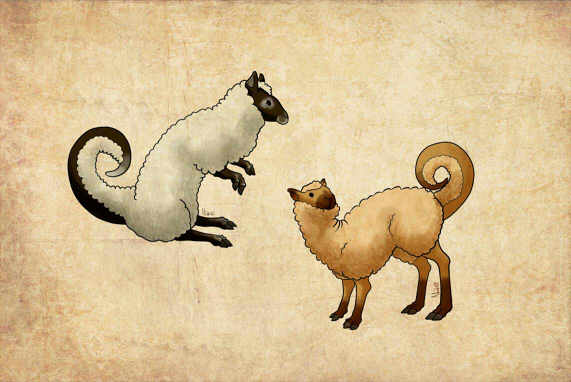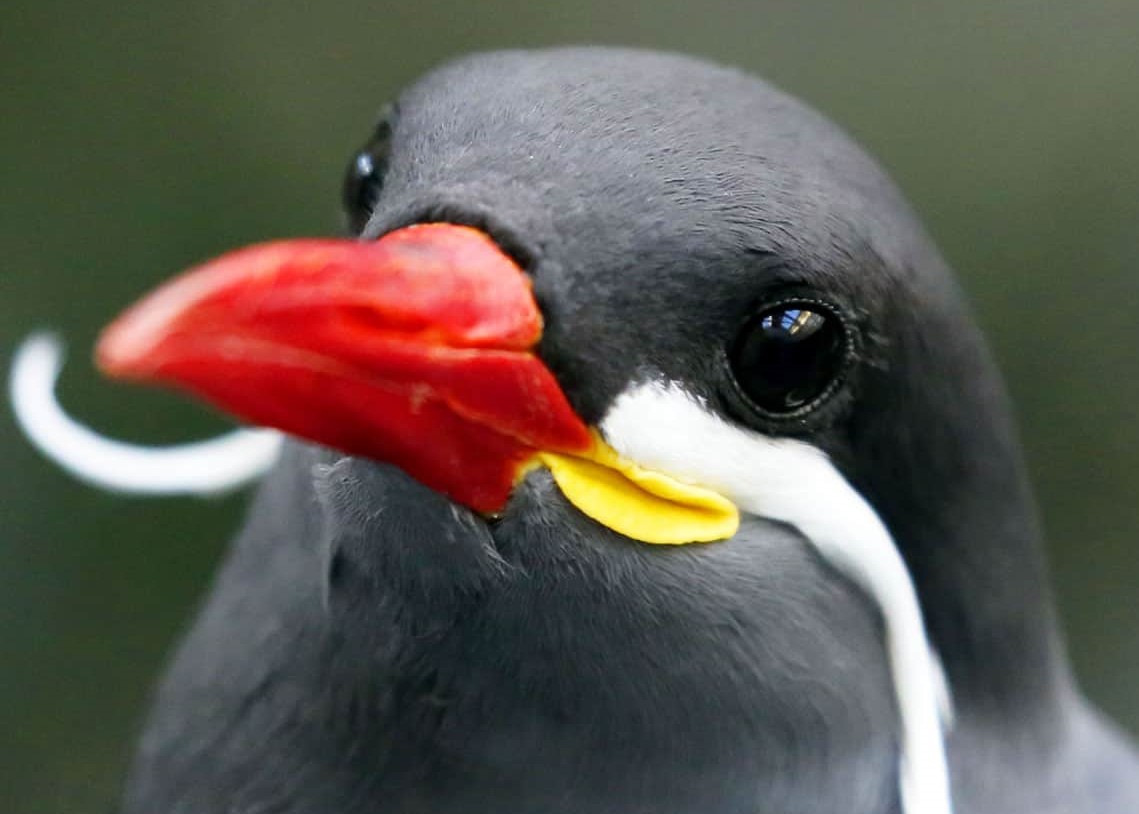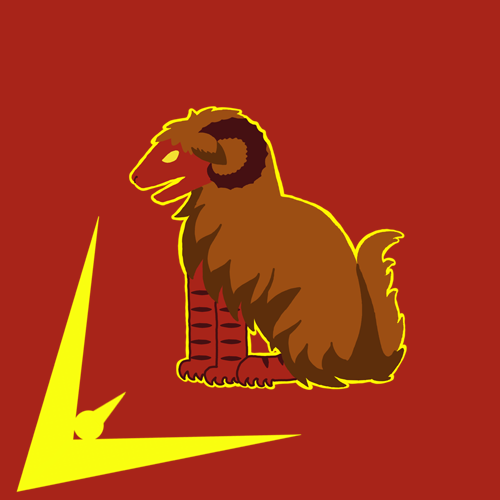Trelis
Show spoiler
Biología
Anatomía
Los trelis son pequeños cuadrupedos ungulados de tres dedos. Su columna forma un arco extremo en la espalda debido a la gran diferencia de largo entre las patas delanteras y traseras, haciendo que tengan los hombros a la mitad de la altura que la pelvis. Tienen el cuello largo y una larga cola gruesa, que les sirve para balancear el cuerpo, y se desplazan mayormente saltando con una inmensa agilidad. Cuando no estan galopando, su cola suele encontrarse enroscada contra la pelvis. Estas criaturas tienen el cuerpo cubierto de lana, excepto por la cara y orejas, las extremidades, y la mitad inferior de la cola. Su lana suele ser de color más claro que el resto del pelo, que va del castaño claro al negro. La lana puede tener el mismo rango de colores, pero los trelis son criados para favorecer aquellos con lana blanca.Reproducción
Los trelis se pueden criar muy fácilmente y se reproducen velozmente. Los domésticos tienen habitualmente entre 6 y 9 crías por camada, pudiendo reproducirse unas tres a cuatro veces por año luego de gestar a sus crias unos 50 días. En estado salvaje, sin embargo, tienden a reproducirse menor cantidad de veces, y tener camadas de entre 4 a 7 crías.Dieta
Los trelis son hervivoros que se alimentan mayormente de hojas largas, raices y semillas.Relación con los Societarios
Domesticación
Si bien el trelis existe en forma salvaje en casi todos los pastizales del archipielago, esta es una especie que fue altamente domesticada. Practicamente todas las civilizaciones de societarios crian trelis en cantidades desde hace miles de años, por lo que la variante domestica esta totalmente domesticada. El razgo más distinguible entre ambos es que la enorme mayoría de los trelis domesticos han sido seleccionados para tener lana blanca.Usos
La lana es el uso más evidente y esparcido de los trelis. Debido a la facilidad para criarlos y lo velozmente que se reproducen, esta lana es accesible y ampliamente utilizada, con el detrimento de que esta especie es considerada básicamente de pocos usos: Luego de algunas esquilaciones, es práctica común faenarlos por su carne, o utilizar sus cueros completos en lugar de tejer la lana.Anatomy
Trelis are small, ungulate, three-toed creatures. They are notable by the extreme arch formed by their column that makes their shoulders rest at about half the height of their hips. They have a thick tail that rests curved upwards and forwards in a spiral , almost touching their pelvis. This tail springs back like a whip when they jump, adding impulse and making them very fast when running.Their bodies are covered by wool, except for their face, ears, extremeties, and the ventral half of their tails.
This wool is usually lighter than the hair on the rest of their body, which can range from light brown to black. In the wild, the wool itself can have the same range of colours, though the domesticated specimens are bred selectively to prefer white-wooled individuals.
Biology
Behaviour
The trelis is a simple, social creature that, in the wild, lives in groups of around twenty individuals of any sex, inhabiting big and complex burrows. They are nocturnal, though the domestic ones, especially those kept as pets, tend to have more irregular patterns of sleep and spend long stretches of the day being active. They can live together in peace with other creatures, and are generally housed with idradeltas.Reproduction
Trelis reproduce fast and easily, especially in captivity.Domestic trelis have three or four litters a year, giving birth to between 6 and 9 babies per litter after a gestation period of around 50 days.
In the wild, they have fewer litters per year, with between 4 and 7 babies per litter.
Diet
Trelis are herbivore creatures. Their diet consists of long leaves, roots and seeds. In captivity, they are fed mainly hay.Geographic Distribution
Wild and feral trelis are present in almost all grasslands of the archipelago, while the domestic variant can be found in nearly all societarians settlements.They don't prosper in thick woodlands, badlands and mountains, as they cannot burrow properly and cannot escape efficiently by sprinting. For this reason, wild colonies are absent in Stunveldt.
Relationship with Societarians
Domestication
The origin of the domestic trelis has been lost to history with evidence of it dating from at least a couple thousand years.Their use has spread through every societarian civilization thanks to its easiness to breed and care for, their widespread uses and the little space they require.
The domestic trelis differ from the wild primarily for the selective breeding of white wool in the domestic one, while most wild ones are brown or agouti.
Uses
Trelis are primarily bred for their wool, which is easy and cheap to produce thanks to the speed in which this creature grows and reproduces.However, a singular trelis is generally sheared only a couple of times, as the common practice is to slaughter the creature for their meat and full hides before their meat becomes too though. The meat of the trelis is highly appreciated, and used especially for stews. Some trelis are also kept as pets, a practice that gained popularity in recent years.
Lifespan
7 years
Conservation Status
Extremely common
Average Height
30~40 cm
Average Weight
5 kilos
Geographic Distribution











Your art style is always so very charming! <3
Check the latest in the wonderful world of WILLOWISP...
Find out what I'm up to...
Support my creative efforts <3
Thank you very much <3 This is an ooold drawing but these critters are definitely still cute!